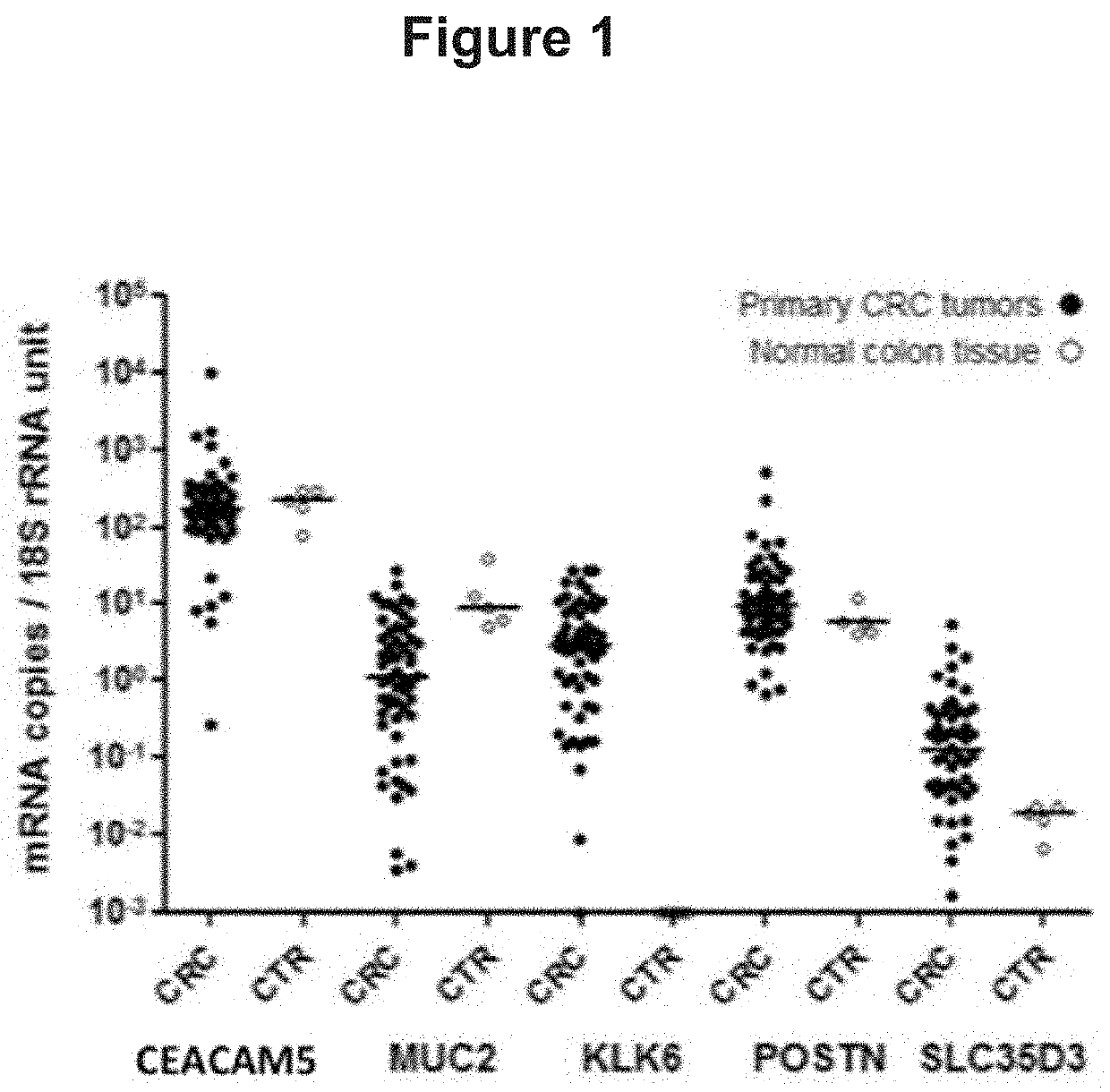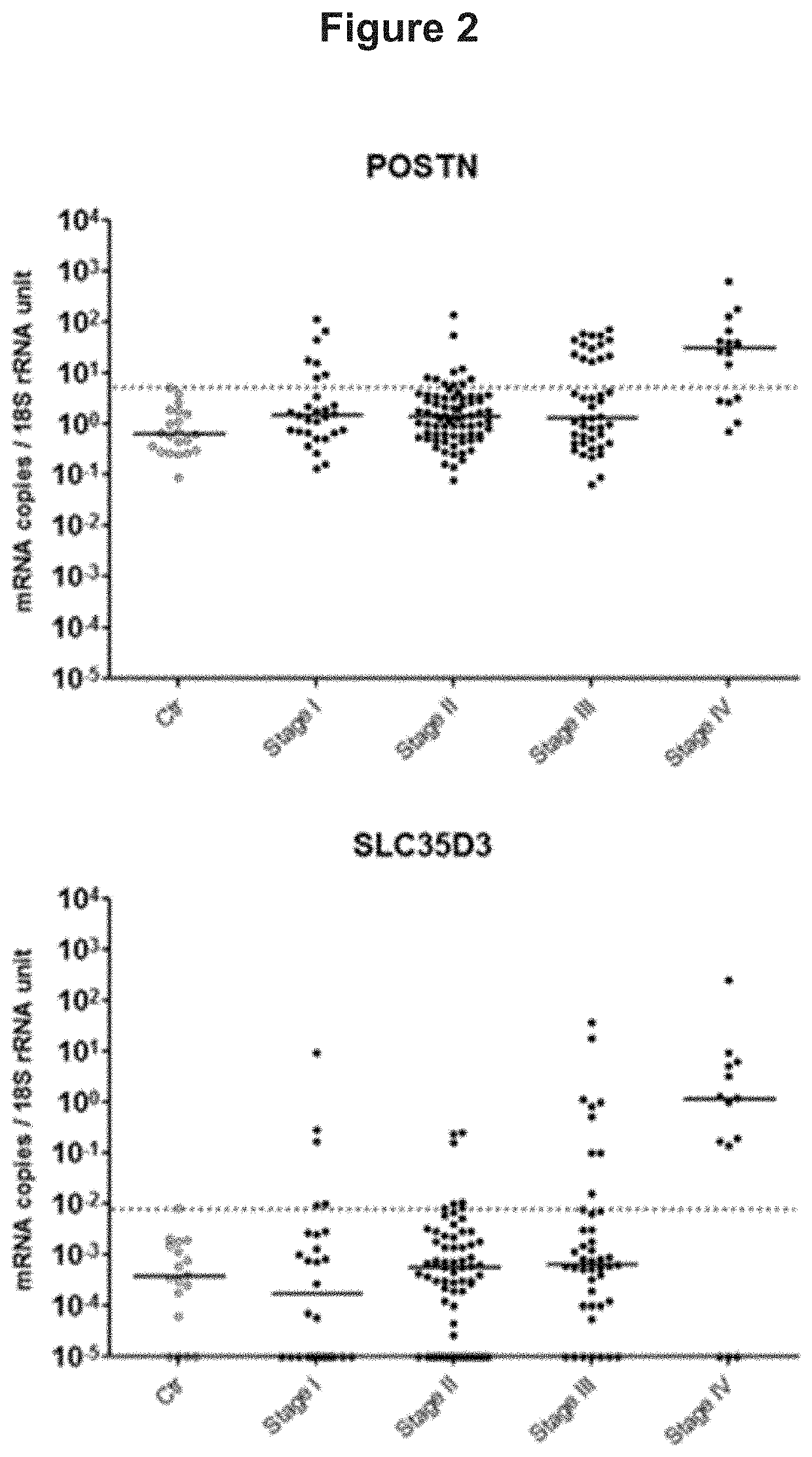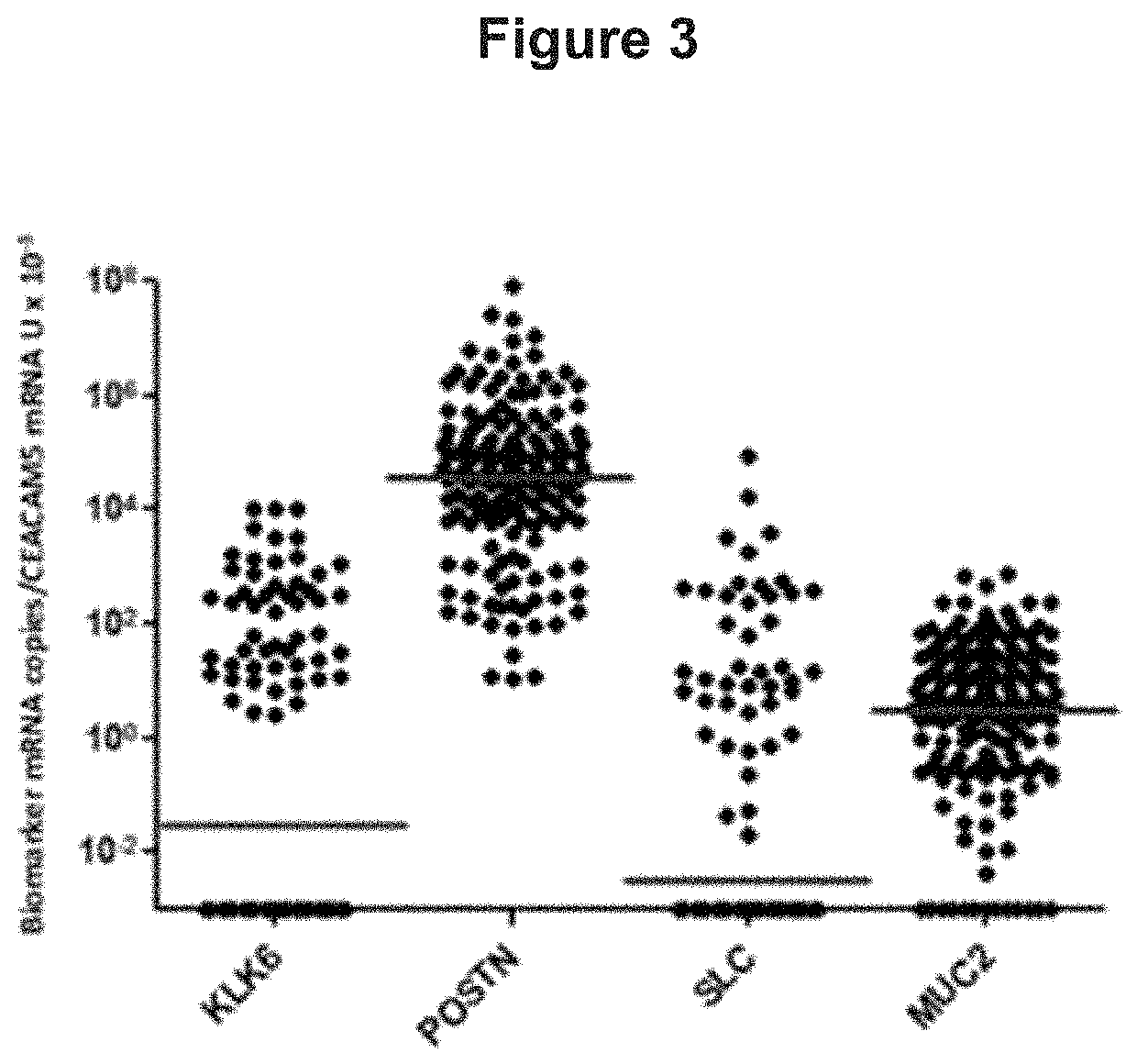Marker genes for colorectal cancer classification, method for judging lymph node metastasis for prognosis of colorectal cancer and kit therefor
a colorectal cancer and marker gene technology, applied in the field of colorectal cancer classification, prognosis and treatment, can solve the problems of insufficient sensitivity, large burden on healthcare systems, and too small sample siz
- Summary
- Abstract
- Description
- Claims
- Application Information
AI Technical Summary
Benefits of technology
Problems solved by technology
Method used
Image
Examples
examples
[0073]Identification of Genes and Gene Signatures that are Significantly Correlated to Risk of Cancer Death in Colorectal Cancer Subjects
[0074]A gene that is of importance for tumor progression is most likely expressed both in the primary tumor tissue and in secondary tumors present in a regional lymph node draining the intestine, A microarray-search for progression markers was performed by analyzing RNA from 4 different H&E positive lymph nodes (i.e. tumor cell containing lymph nodes) of 4 patients with stage III CRC plus 3 primary tumors from 3 of these patients. RNA from 7 control patients (lymph nodes from 2 ulcerative colitis patients, 1 Crohns' colitis patient, 1 colon lipoma patient and 3 normal colon epithelial cells samples) were also analyzed. CRC samples were compared individually relative to all control samples as one group. The microarray data were filtered by setting statistical significance to P<0.05, fold change to ≥5, and minimum intensity to 15. in this way a numbe...
PUM
| Property | Measurement | Unit |
|---|---|---|
| follow-up time | aaaaa | aaaaa |
| real time quantitative RT- | aaaaa | aaaaa |
| size | aaaaa | aaaaa |
Abstract
Description
Claims
Application Information
 Login to View More
Login to View More - R&D
- Intellectual Property
- Life Sciences
- Materials
- Tech Scout
- Unparalleled Data Quality
- Higher Quality Content
- 60% Fewer Hallucinations
Browse by: Latest US Patents, China's latest patents, Technical Efficacy Thesaurus, Application Domain, Technology Topic, Popular Technical Reports.
© 2025 PatSnap. All rights reserved.Legal|Privacy policy|Modern Slavery Act Transparency Statement|Sitemap|About US| Contact US: help@patsnap.com



